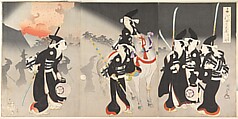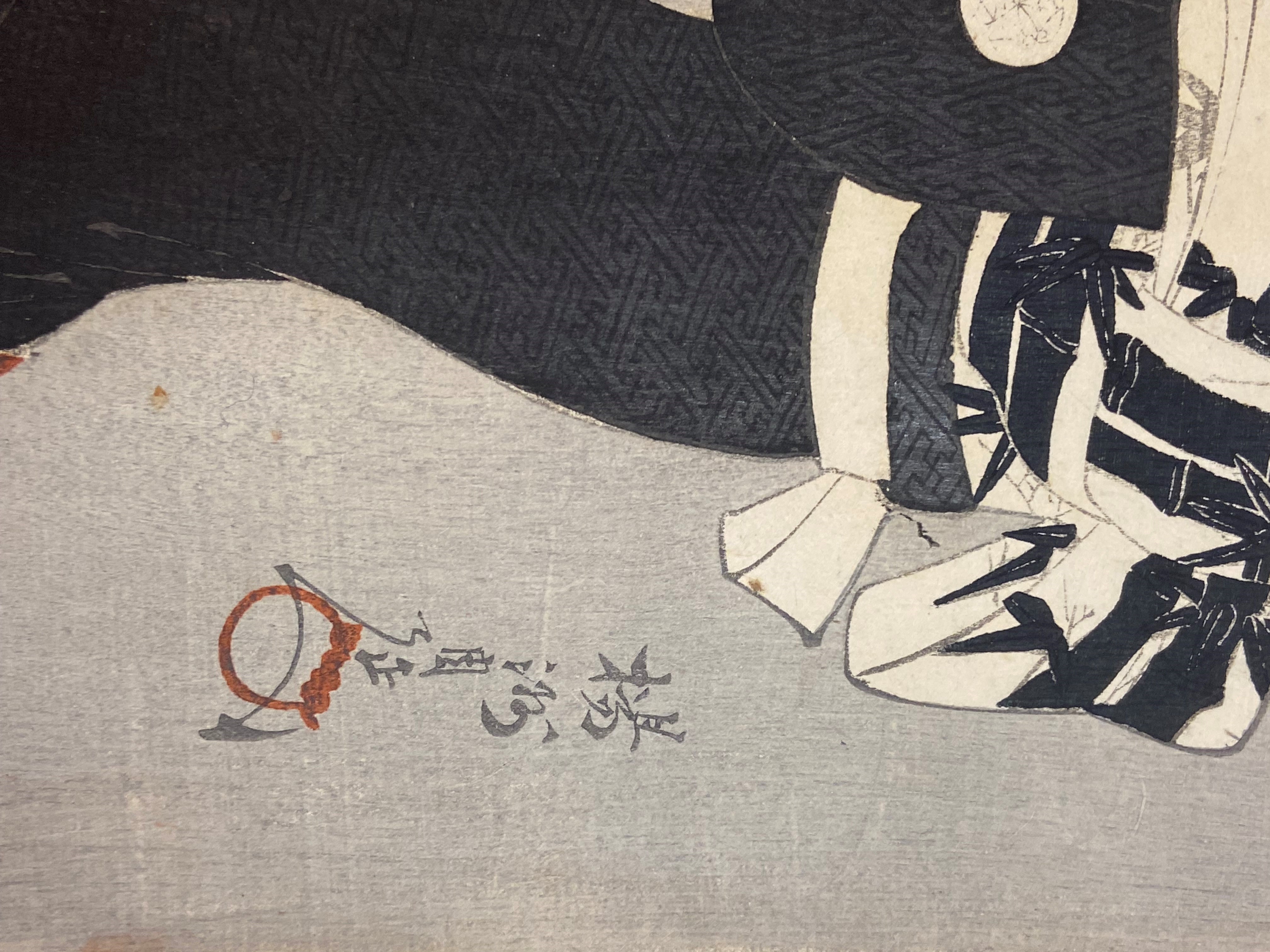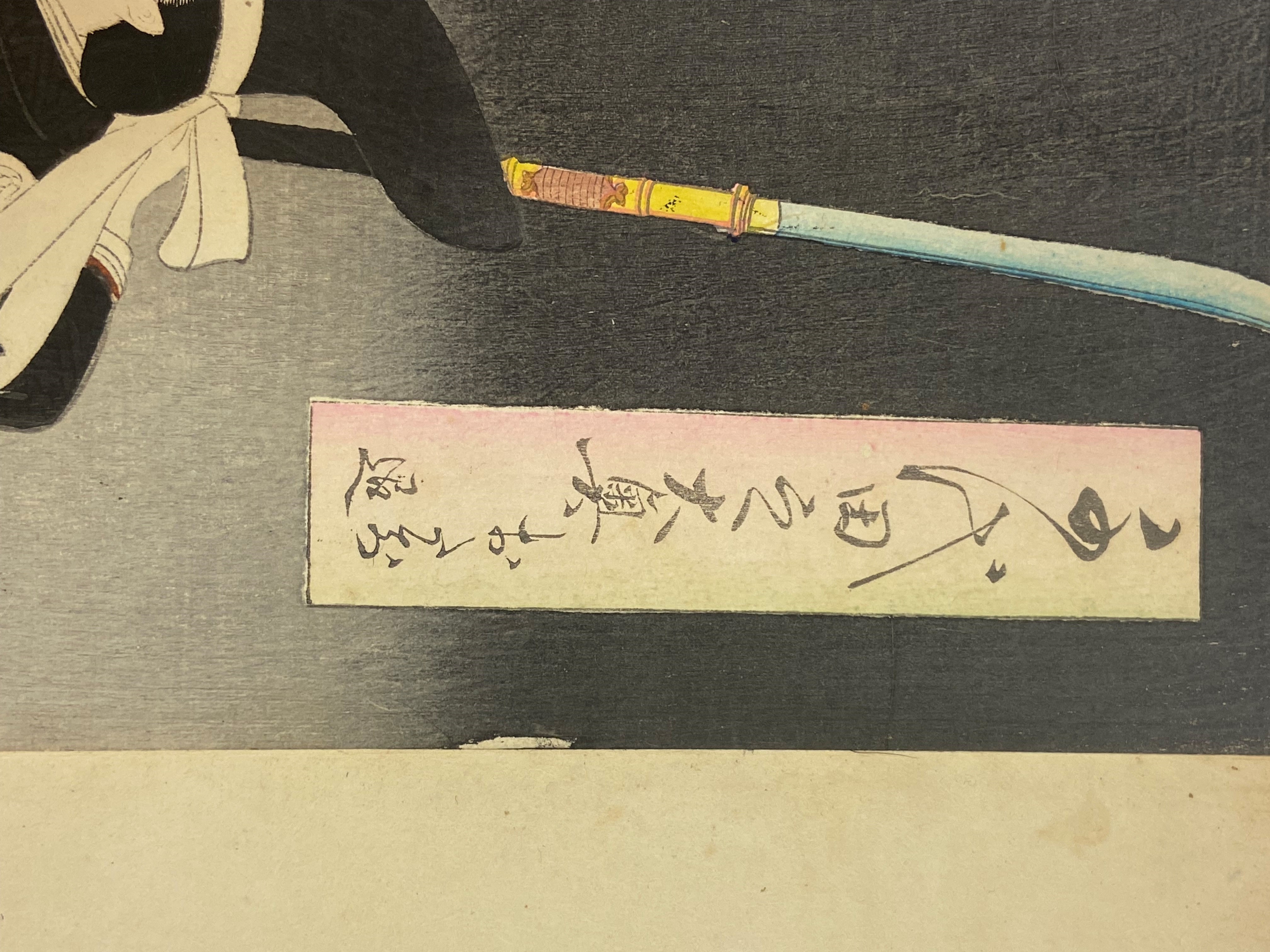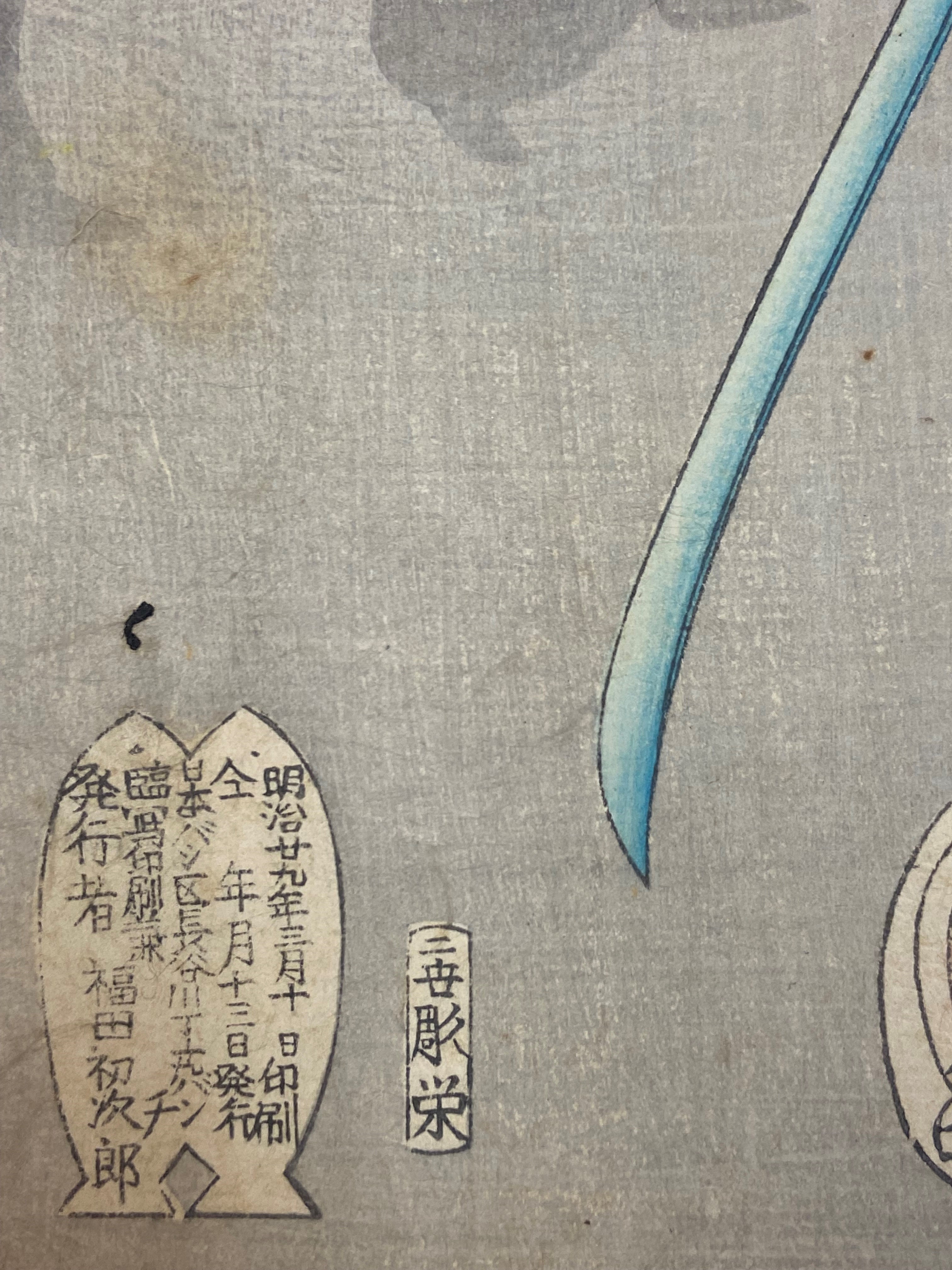“Evacuation of the Ladies,” from the series The Inner Precincts of Chiyoda Castle (Chiyoda no Ōoku, Otachinoki)
Yōshū (Hashimoto) Chikanobu Japanese
Not on view
The print artist Yōshū Chikanobu was scion of a samurai family who fought on the losing side in the civil war of 1868 that led to the collapse of the Tokugawa shogunate and the restoration of the emperor. In later years, Chikanobu often designed prints that looked back nostalgically to the era of samurai rule. In this series “The Inner Precincts of Chiyoda Castle,” Chikanobu imagines a world he never saw—the inner precincts of Chiyoda Castle—better known as Edo Castle—which housed the shogun’s mother, wife, and concubines. The area was off limits to all men other than the shogun himself or his young male heir. The Evacuation (otachinoki) described here probably refers to the Great Fire of 1844 that destroyed much of the castle. Female guards, garbed in black robes tied with a bamboo-motif obi, assist in the emergency evacuation, carrying naginata spears—the weapon of choice for samurai women.
This image cannot be enlarged, viewed at full screen, or downloaded.
This artwork is meant to be viewed from right to left. Scroll left to view more.





